Before Mary Angelina Lipscomb argued with her husband in 1906, Incubator Flat was just another bare spot half way between Hydesville and Carlotta.
But the argument, which took place at the couple’s homestead near Fort Baker in eastern Humboldt, could not be resolved. After a flurry of angry words, Abraham Lipscomb left in a huff. He returned to his roots in West Virginia and never set foot in Humboldt County again.
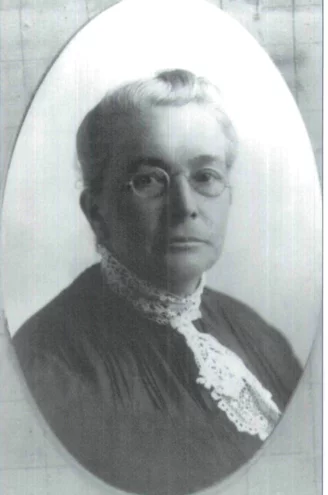
Mary Angelina Lipscomb, shown in a 1916 portrait, was the progenitor mother of Incubator Flat. Spesert Photo, courtesy Maxwell Rowley. All photos via the Humboldt Historian.
Lina, as she was known, was not one to fold under. The daughter of a wealthy West Virginia family, she was well- educated, independent, and adventuresome. She sold the Fort Baker homestead to the Robert Porter family in 1907 and the following year purchased new property some seven miles southeast of present-day Fortuna.
Lina and Abraham had come to Humboldt County from West Virginia in 1893. She and her husband traveled from San Francisco by steamer and, along with eight children, homesteaded at Fort Baker in 1894. Six of the children, Jennie, Frank, Willis. Edwin, Mary Jane, and Sarah, were Lina’s by her late first husband, William Spesert. Oscar and Ferris Lipscomb rounded out the family; during the thirteen years the family spent at Fort Baker, Cyrus, Joseph, and Lewis Lipscomb were added.
These eleven children came with her when she settled in her new home at what was to become known as Incubator Flat. Eventually these children matured, married, and started families of their own. They did not, however, leave the nest. They built additional homes on the flat, and when their own children were grown they too settled down on Grandmother’s flat. In the decades following Lina’s purchase in 1908, there evolved a large related clan, living on a stretch, now called Fisher Road, barely a quarter mile in distance.
Needless to say, this rapidly increasing family required a lot of medical attention.
Dr. Harold W. Comfort, a Fortuna physician, was the doctor of choice. He was summoned to deliver babies on the flat at frequent intervals, day and night. Dr. Comfort made many hasty trips to the area over a span of twenty years, bringing babies into the world. He reportedly remarked that so many babies were being born on the flat, it reminded him of a chicken ranch, where incubators were used to hatch volumes of chicks. So the area was dubbed Incubator Flat. The name stuck, and old-time local families from Hydesville and Carlotta areas use the term to this day.
The children born on Incubator Flat had close ties. Grandfathers, grandmothers, fathers, mothers, aunts, uncles, brothers, sisters, and cousins by the dozen all crowded into a small space on Incubator Flat. When school time approached in the morning, it was a mile walk uphill to the Hydesville Grammar School. Students would string out on Highway 36 in pecking order, like ants scurrying from the nest. Unrelated neighbors could identify the kid’s parents by the color of the kid’s hair and complexion. There were all hues of hair: brown, black, red, and blond — with straight, kinky, wavy, and bushy texture. Skin coloring ranged from white and pink to dark, very dark, and swarthy. Incubator Flat was well represented by different nationalities, English, German, Dutch, French, Scotch, Irish, Native American, Danish, Egyptian, Armenian. Portuguese, Bavarian and God knows what else.
Incubator Flat today, between Hydesville and Carlotta just south of Highway 36 along Fisher Road. You can zoom in or out on this map, or use the button in the upper right to switch to a topological map view.
Unemployment on Incubator Flat did not exist, even in the hardest of times. The families consumed large quantities of food, milk, water, clothes, shoes, and firewood. Everyone worked at something. Most able-bodied men worked in the Hammond, Holmes Eureka, and Pacific Lumber Companies logging operations. Others worked for the large dairies and hay ranches adjacent to Hydesville, Carlotta, and Cuddeback.
Large farms near Incubator Flat in those times were under the ownership of the Fisher, Langdon, Beck, Rocha, Reynolds, Robinson, Walker, Holm, Gondola, Mantova, Filby, Fielden, Gould, Vance, and Gray families. The Incubator Flat clan simply had to work where work was available. They could not be picky. A number of young, unmarried women worked in the logging camps as cooks, waitresses, maids, and laundresses.
The older children of Incubator Flat made up a large labor pool for local ranchers. In summer the young workers could be seen in the fields weeding carrots and beets, pulling unwanted mustard and radish in the vast cultivated prairies of the Hydesville plateau. Some teenagers found work in vegetable gardens, on dairies milking cows, harvesting the Shasta and Lassen varieties of strawberries, or picking Bing and Tartarian cherries. At the turn of the century Hydesville was well known for these fruit crops.
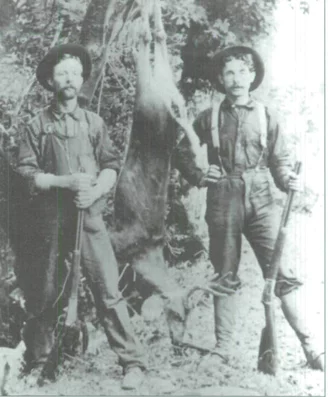
Incubator Flat men hunted deer near Yager Valley for sport and survival. Left, Frank Spesert, the early day photographer, and Henry Rowley in 1915. (Courtesy Jack and Joy Risling)
When spare time was available, the men folk hunted for deer, cottontail rabbits, quail, pigeons, and ducks. The Incubator Flat juvenile population swarmed Mill, Ward, and Yager Creeks fishing for trout, spearing and gaffing salmon and steelhead. Game wardens most often looked the other way and bypassed streams close to concentrations of people.
The Depression years of 1929 to 1940 were severe, but everyone survived with close family ties and good memories. It is estimated that by the late 1930s more than sixty people, all related, lived on a cramped Incubator Flat. But during World War II the families began to break up. Some small families moved away to higher paying defense jobs created by the war. Many men went into the armed forces to serve their country.
After World War II very few returned to Incubator Flat; most settled in other parts of Humboldt County and Northwestern California. Today only the Rowley descendants reside on Incubator Flat. Merry Jane Dinsmore lived on the Rowley place at the flat for most of her eighty-five years. She passed away in 1995. Merry Jane’s sister, Joy Rowley Risling and her husband. Jack, now live on the property.
The oldest remaining former residents of Incubator Flat are Rachel Peck, age 94, Jennie Corbett, 92, and Frances Anderson, 82, from Fortuna, Carlotta, and Table Bluff, respectively.
While most of the early Incubator Flat residents stayed put, its founder, Lina Spesert Lipscomb Dimmitt, did not. In 1911, she pioneered another homestead at Charles Mountain near Blocksburg and lived there until 1915. She sold the property to the Russ Cattle Company, then invested in property in Hollister, California, making her home there from 1917 to 1923.
Between adventures, Lina gave birth to fourteen children. Eleven of them survived to adulthood. She found time to be a homemaker, school teacher, midwife, and farmer. Lina lost her husbands William Spesert and George Dimmitt to premature deaths and separated from husband Abraham Lipscomb. The matriarch of Incubator Flat returned there at the end of her life. She died there in 1924 at age 67.
Lina was a tough, determined, progressive lady who was dedicated to her family, church, and neighbors.
First Residents
While Lina and her clan were the first white people to settle at Incubator Flat, previous history abounds at this landmark location.
The first inhabitants were the Athabascan speaking Nongatl Native Americans. This location was claimed as wintering grounds for these aboriginal people. Each year the Nongatls would migrate down from their summer hunting and gathering grounds on the vast open prairies of Showers Pass, Fort Baker, Harts Valley, and the headwaters of Yager Creek to escape the cold and deep snows. The lower elevations were more comfortable and safe from exposure. Back home again in the winter months, the Nongatls would take advantage of the salmon runs on Yager Creek and the Van Duzen River.
Another important food source for the native bands was found near Goose Lake, where the hunters could trap and snare water fowl and small animals. If luck were with the hunters, perhaps a herd of elk would be found grazing near the marshy shores. Goose Lake is located about one half mile north of the town of Hydesville on Johnson road. The lake was drained into Mill Creek many years ago to make way for agricultural lands. Large Nongatl winter camps were located on the Langdon, Spesert, and Cooper properties. Many artifacts have been gathered on these lands over the years.
Intrusion of white settlers began as early as 1851 on Nongatl ground. Original land claims were filed by the Cooper, Langdon, Ready, Simmons, and Delaseaux families. Immediately after the arrival of these pioneers, the Nongatl waged guerrilla warfare to try and expel the foreigners from their six-thousand-year-old territory. Ambush became common on and near Incubator Flat. The Cooper family suffered the loss of three brothers, David, Aldolphus, and George. Albert Delaseaux, who was married to a Cooper sister, was also killed while plowing a field in March of 1869. A complete account of the Cooper and Nongatl tragedies may be found in The Indian Wars of the Northwest by A.J. Bledsoe.
Another significant part of the historical importance of Incubator Flat was the heavily traveled Eel River- Weaverville Trail, which was used as a major commerce route to the Trinity River gold mines from 1851 to 1870. Overgrown segments of the old trail are still visible today on the Dinsmore and Filby properties. Remains of the worn tread can be observed as it ascends out of Mill Creek, which appears as Barber Creek on current maps.
The flour mill that had been built in 1854 by the Cooper brothers was abandoned in 1862 and eventually deteriorated to the state shown in this 1892 photograph. (Courtesy Merry Jane Dinsmore Collection)
Through the years several businesses flourished, on or near. Incubator Flat. Cooper Mills was established in 1854 to grind wheat into flour that was sacked and mule-trained out to the Trinity gold mines. Tubs of butter were churned by the Cooper and Delaseaux partnership and routed over the mountain ranges to the gold fields. With the help of neighbors, the five affluent Cooper brothers financed and pioneered the Eel River-Weaverville Trail. This same group also constructed a trail to Red Bluff in 1854 to bring in dairy cattle for the Cooper butter business. The Cooper mill and dairy farm was abandoned in 1862.
Continued harassment by the Nongatl, and the early deaths of four of the Cooper brothers, caused the only surviving brother, John Cooper, to move to Idaho. After the Indian Wars subsided in 1865, John returned to the mill and farm on Yager Creek. Zena Cooper Gould and her husband, Dallas, operated the historic ranch for many years. It was well known for purebred Romney sheep and champion sheep-herding dogs.
A Grave Mystery
Other early settlers to the Incubator Flat area in 1854 were the Langdon family, who owned most of the fertile land. John Porter Langdon and his wife, Caroline, were members of a wagon train that left Council Bluffs, Iowa on May 11.1854. These pioneers traveled the Oregon and California trails to reach the west coast. There were sixty-four people in this train. John and Caroline’s first son, Thurston Platte Langdon was born on May 30, 1854, while the wagon train camped on the bank of the Platte River in Nebraska, thus providing the boy’s middle name. In Hydesville and Humboldt County he was always known as Platte Langdon.
The first local record of the Langdon name was recorded when John P. Langdon registered a brand for cattle and hogs in Humboldt County on Feb. 12,1857. The 1860 census of the Eel River Township listed Porter Langdon, 42, Caroline Langdon, 35, Thurston P. Langdon, 6, Elmore L. Langdon, 4, and Charles Langdon, 1. Minor King Langdon and Joseph Avery Langdon, brothers of John Porter Langdon, arrived in Humboldt County in 1851 and 1852. These two brothers settled in the Petrolia-Mattole region.
John Porter Langdon erected a flour and lumber mill around 1862 on Incubator Flat. Water was flumed into the water wheel mill from Mill Creek. The lumber mill, located one mile east of Hydesville, produced most of the redwood boards used to build the town. Hydesville had its beginnings in 1858. Before then the area was referred to as Goose Prairie. Hydesville was a pack center for the gold trade and cattle and sheep operations for Eastern Hurnboldt, Trinity, and Mendocino counties.
John Porter Langdon met the same fate as the three Cooper brothers and Albert Delaseaux. A news article from the Humboldt Times dated September 24, 1864, announced his death:
Death of J. P. Langdon, Esq. We are again called upon to record the death of another pioneer of Humboldt County. J. P. Langdon, Esq., the deceased, left the county in May or June last, in company with others, for the Boise Mines, intending to be absent a short time only. He started with a drove of stock which he intended to take through to those mines, and had accomplished the greater part of his journey when he was set upon by Indians and in the contest with them lost his life.
The following article from the Boise News of August 27, 1864, spells out the details of the unfortunate incident.
B.F. Channel, an old California friend of ours, and one of the early prospectors in this basin, arrived here on Tuesday evening, having brought some four or five hundred head of cattle from California by Goose Lake route. He informs us that on the 21st day of July, when twenty five miles southwest of Conical Butte. between Goose Lake and Harney Valley, he in company with a gentleman from Humboldt County. California, by the name of Porter Langdon. who was also bringing through a band of cattle, together with a lad from Tower House. Shasta County, by the name of Thomas Renny, some seventeen years of age. was attacked while away from the herd of cattle that had strayed away, by fifteen Indians.
Channel, with Colt revolver, took one side of the trail, and Langdon, who had no arms with him, took the shotgun from the boy and took the other side, placing the boy between them. In this manner they rode some distance, keeping the Indians at bay. Those armed only with bows and arrows, approaching within range of pistol or gunshot, while others, having rifles, remained at a distance. At length a shot struck the boy in the back, somewhere near the spine, and he fell from his horse; a moment later Langdon was also shot, and fell mortally wounded. Acting promptly, Channel found himself out of reach, and as the ground was very hard, it was difficult for the Indians to track him, and in this manner he escaped and joined the train unhurt.
Being satisfied that both Langdon and the boy were dead, and as the party was rather weak to encounter a large band of Indians, the mountains doubtless being full of them, it was deemed unsafe to attempt the recovery of the bodies of the unfortunate, or the cattle that were lost, so they came on without them. Channel lost 150 head, and about the same number were missing from the herd belonging to the deceased Langdon. L. H. Tower and others.
The survivors sent a note by the military expressman to Colonel Drew, who was encamped with his command to the south of them, informing him of the circumstances, and requesting that proper steps be taken for redress and also the recovery and burial of the bodies of Langdon and Renny.
Mr. Langdon was a widely known and highly respected citizen of our county, and the circumstances attending his death, his absence from home in a far off wild region, render the announcement of this sad intelligence more painful. He leaves a wife. Caroline Simmons Langdon. children. Platte. T. Langdon, about 10 years. Elmore L. Langdon. 8 years, and Otilia, 2 years, to mourn his death. John Porter Langdon was 46 years old when he was killed by the Piute Indians in 1864.
Accompanying John P. Langdon on the ill-fated cattle drive to the Boise Mines were neighbors, William H. Simmons and John B. Davis of Hydesville, who both returned home unscathed.
While the Langdon family descendants knew that John P. had been buried out in the desert, they did not know the dairies location of his grave. In the spring of 1998 Eureka resident Evelyn Brogi, a descendant of John P. Langdon, set out to find her great-grandfather’s unknown burial site in Eastern Oregon. After much research and numerous disappointing visits to desert cemeteries, Evelyn contacted Eugene Luckey from the Harney County Genealogical Society in Bums, Oregon. Finally, progress was made.
Eastern Oregon lore, passed down for more than 130 years in Harney County, suggested that the isolated graves of two men existed near an old campground site called Rattlesnake Camp, Evelyn visited the area and discovered two unmarked graves fenced off by barbed wire. The fence had been erected by a local rancher to honor the dead and to protect the site. It is believed by the historians of the territory, and Evelyn Brogi, that indeed the area was the resting place of John P. Langdon from Hydesville and Thomas Renny of Tower House, Shasta County. The graves are located near Goose Lake and Harney Valley, Oregon.
The search was over and very satisfying, both spiritually and historically, for the Langdon descendants of Humboldt County.
More Industry
Around 1910 Rasmus Beck started the Woodside Creamery on Incubator flat. The creamery produced butter from the numerous dairies around Hydesville, Carlotta, Cuddeback, and American Tank. After the cream was separated from the raw milk, the skimmed milk was piped into Ward Creek, a tributary of the Van Duzen River. Only the cream was considered valuable in those times. Environmental concerns didn’t exist; no one worried about stream pollution. The Woodside Creamery shut down sometime around 1920. For a long time the creamery building was used by the Langdon Ranch to store baled hay. Kids would play in the structure, building forts, castles, and play houses out of the tons of hay stored there. Kindhearted owners didn’t care.
The Woodside Creamery produced butter from the numerous dairies around Hydesville and Carlotta. (Spesert Photo, 1910).
Downslope from the Incubator Flat highlands, less than one quarter mile, lay the lush, green. Yager Valley. There, in the valley, was the location of Cottage Grove Nursery, which was owned by the partnership of Ward and Devoy. For centuries, tremendous stands of huge, old growth redwood trees had stood as sentinels over Yager Valley. It had been logged and clear cut in the 1908-1912 period by the Newell and Mclntire shingle mill that was located in Metropolitan. Loggers felled the giant trees with hand tools, buckers used “misery whips” to cut the enormous trees into short lengths and then split out bolts for shipment by railroad to Metropolitan. There, the bolts were made into shingles.
Ward and Devoy later cleared the land of the huge leftover stumps with steam donkey engines and dynamite. Workers pulled the extracted stumps with teams of horses and mules over to Ward Creek, where the stumps were burned for several years. Yager Valley was leveled and plowed and eventually planted to rows and rows of daffodils, narcissus, and lilies. With the arrival of spring, the dale was a glorious wash of color for residents who gazed down from Incubator Flat. Much of the modern-day Yager Valley is now owned by the Mantova and Wright farms, which have dairies and also raise sheep.
Still another business succeeded on Incubator Flat from 1908 to 1917: Spesert Photos, owned by Frank Spesert and his sister, Mary Spesert Rowley. Frank and Mary were professional photographers who had apprenticed in their late teens with their uncle at his Franklin Maxwell Gallery in Fresno, California. Spesert Photos specialized in portraits, local disasters, and stereographic images. Stereoscope viewing was a popular pastime at the turn of the century. (Photographer historian Peter Palmquist wrote a detailed account of Spesert Photos in the Humboldt Historian Vol. 36 No. 6, Nov.-Dec.1985.)
The last known business on Incubator Flat was the Rowley Produce Stand, which operated from 1934 to 1945. Located at the junction of Fisher Road and Highway 36, this venture offered summer produce from July through September. Lots of Golden Bantam corn was sold each summer to passing motorists.
Fine Neighbor
Incubator flat citizens were extremely proud of a certain neighbor, Robert F. Fisher. He was elected to the California State Assembly and served from 1927 to 1933. Bob and his wife, Bess, managed the Fisher sheep and hay ranch for over fifty years. The Fisher Ranch was owned by Bob’s brother, Fred, a prominent federal judge in San Francisco. Fisher Road and the current bridge that spans Yager Creek at Carlotta on State Highway 36 are dedicated to Bob Fisher’s memory for his political service to California. Embedded in concrete on the railing of the west lane of the Yager Creek bridge is a brass plaque:
Robert Fisher
1879-1969
Soldier, farmer, state legislature 1927-1933
Dedicated to his country, community, and most of all to his
neighbors
Mr. Fisher was well known and respected by the citizens of his assembly district. Bob and Bess were role models for kindness, integrity and honesty. Ranch hands were devoted to them, and everyone on Incubator Flat wanted to be in their hire.
Another historic location near Incubator Flat, directly across from the Cooper-Gould sheep pasture in a northeasterly direction and adjacent to Yager Creek, was the site of the Holmes Eureka logging camp. In recent years Pacific Lumber Company has cold decked redwood logs over the once bustling logging encampment. The temporary village contained more than fifty structures, including four- person bunk houses, cook houses, a laundry, an office building, company store, equipment sheds, and numerous privies.
Around 1912 Holmes Eureka Lumber of Eureka logged the east and west slopes of lower Yager Creek and the headwaters of Cooper Mill Creek.
A suspension bridge was constructed across Yager Creek to gain easy foot access to Vance’s Carlotta Hotel from Yager Camp. This establishment was a favorite spot for the hard working loggers. Excellent meals, entertainment, and heavy drinking, plus hot-tempered fist fights, were common on weekends at the popular crowded Carlotta Hotel.
History continues to repeat itself at the old ghost logging camp. Just a short distance from the camp site. Pacific Lumber Company maintains a locked gate to prevent public access to their property. A group of people who support preservation of Headwaters Forest have held organized protests at the gate on numerous occasions. The protesters’ actions in North Yager Valley have received nationwide publicity. Little do the environmental protester participants know of the history that surrounds them, as they make more history themselves.
This story will not be complete until all descendants of the families who lived on Incubator Flat from 1851 to 1940 have been recorded. Just maybe you are one of those descendants.
INCUBATOR FLAT FAMILIES 1850-1940
Nongatl Band of Native Americans, Cooper, Delaseaux, Langdon, Quick, Simmons, Raymer, Barber, Vance, Fisher, Lutman, Rowley, Beck, Spesert, Lipscomb, Fraser. Peterson, Peck, Tompkins, Rocha, Bannister, Wicks, Gould, Mantova, Friend, Stephenson, Rudolph, Dumphe, Ward, Devoy, Gondola, Bruner, Eaton, Zanotti, Church, Creighton, Hamilton, Slingsby, Thayer, Baham, Smith, Stewart, Dinsmore, Gillette, Christie, Likyou.
###
The story above is excerpted from the Summer 1999 issue of the Humboldt Historian, a journal of the Humboldt County Historical Society. It is reprinted here with permission. The Humboldt County Historical Society is a nonprofit organization devoted to archiving, preserving and sharing Humboldt County’s rich history. You can become a member and receive a year’s worth of new issues of The Humboldt Historian at this link.
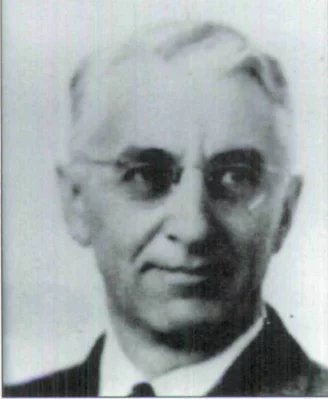
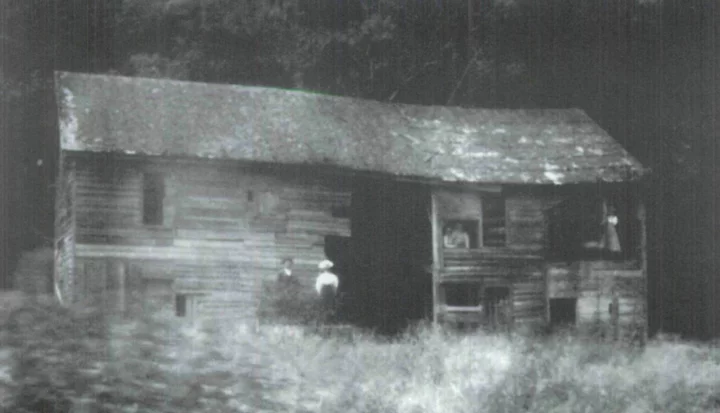
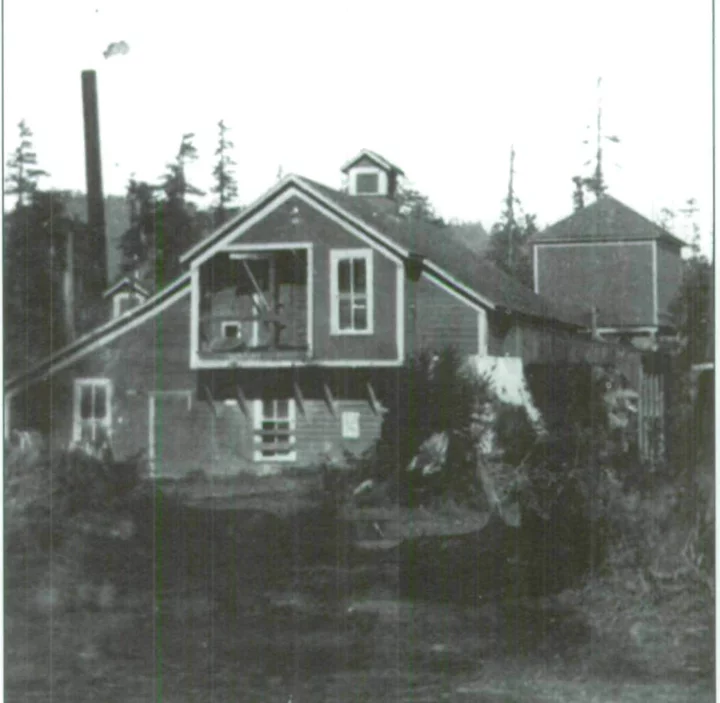
CLICK TO MANAGE